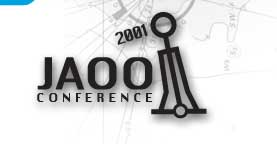|
|
 |
<bigwig> service: jaoo
BIO:
Ren� W. Schmidt is a senior staff engineer in the
client deployment group at the Java Software division at Sun
Microsystems in Cupertino, California. Ren� is one of
the principal technical contributors to the Java Web Start
project, he is the specification lead of the Java Network
Launching Protocol (JNLP) and API specification.
Before joining the Java Web Start project, Ren� was part of
the
Hotspot development team that shipped Java(TM) Hotspot(TM)
Performance
engine 1.0 and 1.0.1. Besides spending his time on improving
client
deployment technology, Ren� has also had the fortune to talk
about Java technology at many occasions.
Before Ren� joined Sun in 1997, he had a brief look at the
business world
while wearing a tie and working for one of the top IT consulting
firms.
Ren� holds an MS in Computer Science from both University of
Washington, Seattle, and the University of Aarhus, Denmark.
Java(TM) Web Start: Delivering Rich User Experiences on the Web
Abstract
Java Web Start is a new client deployment technology that allows
full-featured Java applications to be downloaded and
launched with a single-click in a browser. It fully automates the
process of downloading, installing, upgrading, and
managing client-side software. Thus, Java Web Start provides many
the same deployment properties as for HTML:
one-click access, transparent updates, cross-platform access, and
security, but for full-featured applications.
The first part of this talk will introduce Java Web Start, and
show how a rich Web user experience can be built
using this technology. The aim is to achieve a user experience
that goes beyond what is seen on the Web today using
both HTML and client-side applications. We will also discussion
when moving from HTML to a rich clients makes sense.
The second part of the talk will discuss and motivate the design
of the underlying technology of Java Web Start: The
Java Network Launching Protocol and API (JNLP). The design of JNLP
is heavily influenced by the Applet model, but
improves
and complements it in several ways. It provides stronger download
semantics, incremental download of JAR files,
off-line support, multiple JRE support, browser independence, and
a more expressive sandbox with secure access
to local disk.
What's New in JavaTM Client Technology?
This session briefly introduces and demonstrates the new API and
features that are being introduced in the JavaTM 2
Platform, Standard Edition (J2SETM) 1.4 release, to facilitate
writing richer client applications. The following topics
are covered:
. Changes to the drag-and-drop architecture, as well as changes
in the JavaTM Foundation Classes (JFC/Swing) API to
take advantage of this
. Support for frames with no decorations, as well as the ability
for look and feels with JFC/Swing technology to
provide Window decorations
. Printing now supports printer discovery, capabilities and job
specification, a new print dialogue, and the ability
to plug in additional printer services.
. Image I/O: a new pluggable framework for reading, writing, and
inspecting image data
. Open-type font support and more international fonts
. Hardware-accelerated images for faster off-screen operations
and double-buffering
. Full support for Thai and Hindi
. Unicode 3.0
. Full screen mode and double-buffering
. The new keyboard focus architecture
. Extensions to the JavaBeansTM specification, including the new
persistence API
|
|

|
Presentations:
Deployment with JavaWebStart (Technology, Middleware and Enterprise Systems)
Rene Schmidt, Sun Microsystems
Monday [11:00 - 12:00]
Conference Hall
Slides from this presentation
Whats New in Swing (Technology, Middleware and Enterprise Systems)
Rene Schmidt, Sun Microsystems
Wednesday [11:30 - 12:15]
Conference Hall
Slides from this presentation
Next speaker

|




